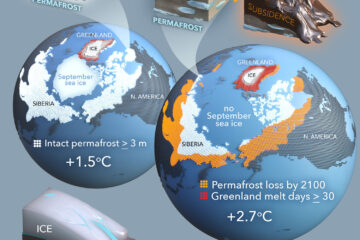Where resource-acquisitive species are located: the role of habitat heterogeneity
Rising temperatures with increased drought pose two challenges for management of future biodiversity. First, are the most vulnerable species concentrated in specific regions and habitats? Second, where can landscape heterogeneity potentially mitigate impacts? We conducted a comprehensive trait analysis of forest plots spanning the eastern United States to quantify how resource-acquisitive species respond to moisture-soil-climate interactions. We found that resource-acquisitive species, including nutrient-acquisitive and moisture-acquisitive species, respond disproportionately to environmental gradients, and their response is largely explained by soil variation. We showed that the strong boundary of resource-acquisitive species occurs near the last glacial limit, highlighting one of the clearest indicators of soil controls. Although local soil moisture may reduce drought-induced stress for moisture-acquisitive species, nutrient-acquisitive species remain vulnerable on wet soils in dry climates. The results suggest that theories explaining species distributions should devote close attention to the combination of local drainage and soil type.


